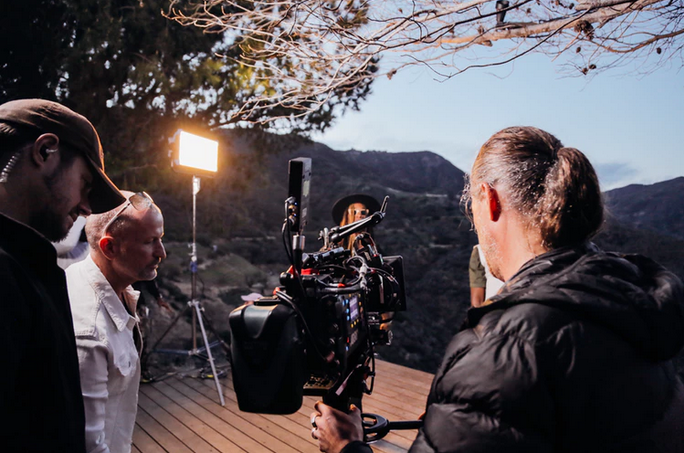Contents
Introduction
We watch movies and get entertained them, but on learning how to become a movie director, you can get a better insight into how such films are made as masterpieces. In this guide, we give you the inside scoop on how to become a movie director or filmmaker.
How much does the average filmmaker make?
For the hourly wage of a filmmaker or movie director, it is usually around $35 an hour and has the following categories (approximately):
|
|
||
|---|---|---|---|
|
|
||
|
|
||
|
|
||
|
|
||
|
|
How much money does a film director make a year?
Here are the average statistics of the average income of filmmakers or movie directors, according to the United States Bureau of Labor Statistics:
|
|
||
|---|---|---|---|
|
|
||
|
|
||
| Row:3 Cell:1 |
$187,199 |
||
|
$45,400 |
How do you become a successful filmmaker?
To become a successful filmmaker or movie director in the future, if you ever dream of such a career someday, you would have to fulfill the following:
1. Learn the Required Education
To become a movie director or filmmaker, you need to have some Bachelor’s Degree in film studies, directing, acting, writing and the like. Being a director is a very heavy job because you need to see everything in the production of a film or movie series. You have a ton of responsibilities and you also need a lot of technical knowledge that needs to be applied in your filmmaking routines.
2. Know the Responsibilities and Duties
Being a movie director requires you to have a lot of things to manage in order to create a successful film of any movie genre that you choose. The list of key responsibilities and duties of a filmmaker or director include:
- Keeping track of all the scripts
- Manage the actor rehearsals
- Hiring and casting
- Direct the scenes of the film
- Make crucial creative decisions on the film
- Choose the shooting location
- Oversee the set design and costumes
- Choose the musical score and/or soundtrack appropriately
3. Get Familiarized on Where to Start Working
The most common places you will be working would be in media companies or film studios that need a director or filmmaker right away. Whether it’s a documentary or a full-length film, they could need your expertise.
You also need to prepare to be physically, mentally and emotionally challenged due to having to move to different locations for shooting. This is especially true if your film features a lot of action scenes.
4. Be Patient and Count Small Victories
Filmmaking is something that’s not done overnight – you could get some success if your featured film has been accepted in cinemas or appealed to a number of students. From there, count it as a small victory and start working your way into the industry bit by bit.
5. Prepare a Backup Source of Income
Filmmaking is not a stable job, just like with being an actor or actress. You need to have some other source of income in case you really need to spend more budget than you planned in order to complete your produced film. You may also need it in case your shooting gear fail on the field.
6. Practice different important professional values
As a filmmaker or director, you should have the following values in order to be a successful one in your career:
- Hone Your Creativity
- Put up a Message in your Work
- Learn How to Network
- Never Stop Being Curious
- Be Open to Change
How much do film editors make?
Film editors usually get about $63,680, which can be divided into two categories:
|
|
||
|---|---|---|---|
|
|
What gear should I begin with?
If you want to be a movie director, you should first consider basic Steadicams. This is important if you are still beginning on the film making industry, especially for indie film producers or shot film/student film genres. Here are some great Steadicams to begin with (prices are subject to change):
FeiyuTech AK2000
This budget-friendly Steadicam is perfect for beginner filmmakers, especially for students. It has the following key features:
FeiyuTech Feiyu AK4000 3 Axis
This one is a little pricier but has more features, such as being a low-power design, has a carbon fiber extension rod, and an adjustable four-directional center of gravity. Let’s have a look at its features:
| Canon 80D
Canon Rebel T6 Canon 6D Mk II |
|||
|---|---|---|---|
| Payload |
|
||
|
|
||
|
|
||
|
Hunting and Space Mode
Beveled angle design for ease of shooting Magic Ring for zoom and focus control Simple lens and camera control The four-directional center of gravity |
||
| Connectivity | Wi-Fi
Bluetooth |
Feiyu A2000 Dual Hand Grip Kit 3-Axis Camera Gimbal
If you want two cameras at the same time, this Steadicam is just for you. It excels well with panoramic pictures, time-lapse making, and automatic shooting. Its key features are:
FeiyuTech AK2000 3-Axis Camera Stabilizer GimbalCompatibility |
Header 2 | |||
|---|---|---|---|---|
| Payload | Canon 5D 6D Series
Sony A9 A7 Series a6500, a6000 Panasonic GH4/GH5 |
|||
|
|
|||
|
|
|||
|
Anti-shake algorithm
EVA anti-collision form for steadiness Detachable handle for ease of installation Auto-rotation mode Trigger between gimbal reset and lock mode |
|||
|
Bluetooth |
Conclusion
Being a movie director can sound intimidating, but if you really want to pursue this career path, then you not only have to equip yourself with knowledge and experience but you should also be ready to improve your shooting gear as well to be able to create successful and professional-looking films!








